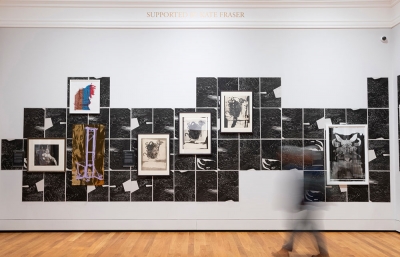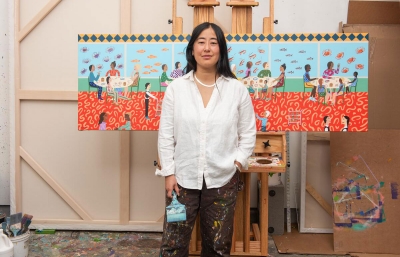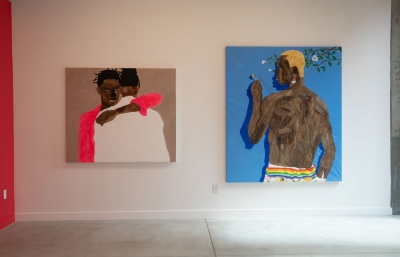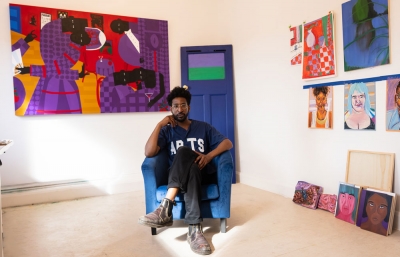My studio has been in my apartment for the past few years. Initially, it was a choice made out of necessity—it was less expensive and more convenient to paint at home than to rent a separate space that I may not even have the time to use on a regular basis. During lockdown, at the beginning of the pandemic, I found myself, like so many, unemployed with significantly more time to paint, so I felt very fortunate to have my studio in my apartment at that point. The space itself is a 10’ x 10’ corner room with two windows, so it stays pretty bright there all day. This works well for me because my preference is to paint by daylight.
One of the greatest advantages of having my studio in my home is being able to roll out of bed in the morning, walk a few steps across the apartment and begin painting. On the other hand, one of the greatest disadvantages is having to meticulously avoid making a mess so that I will get my security deposit back when I decide to move again.
To avoid covering the room with paint splatter, I’ve layered canvas drop cloths on the floor and lined the walls with plastic sheets. Instead of using an easel, I lay the canvas on a flat surface so that when painting with diluted acrylic, it won’t drip down the canvas. With larger canvases, I paint them while sitting on the floor, and with smaller works, I lay them on a makeshift table that consists of a large wood panel resting on storage bins which contain old artwork and art supplies.
In the past, I’ve rented studio spaces from dilapidated, partially repurposed mill buildings that were very hot in the summer, poorly heated in winter and very inconveniently located. I definitely prefer to work from home—there’s no commute, there’s more control over the temperature of the studio, and I can stay in my pajamas as long as I want! —Lindsay Gwinn Parker
Parker was the winner of the Liquitex x Juxtapoz Virtual Residency contest held in 2020 and run in 2021.















